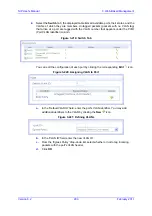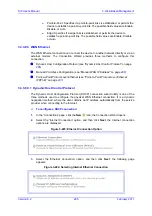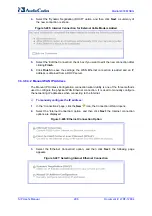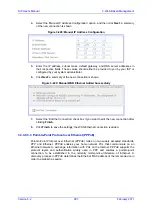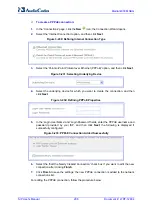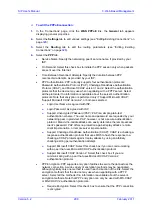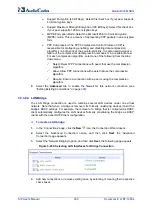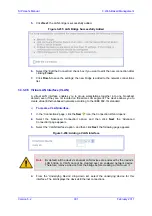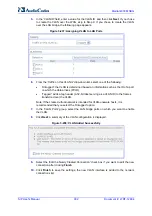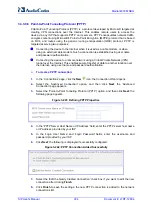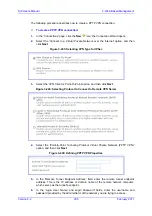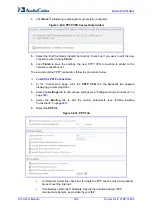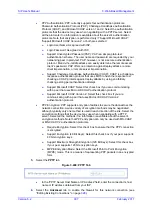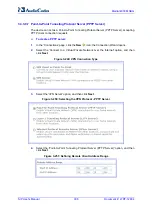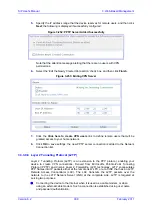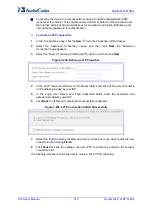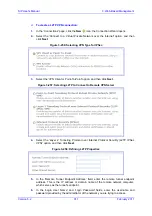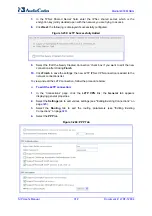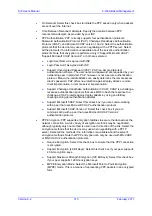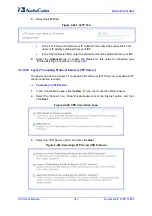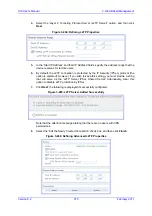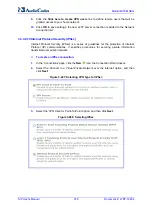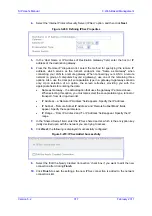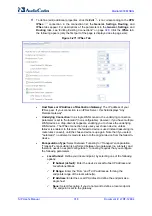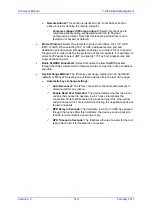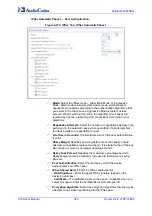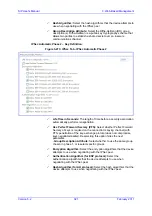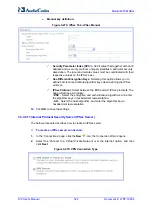
Version 6.2
307
February 2011
SIP User's Manual
3. Web-Based Management
•
PPP Authentication: PPP currently supports four authentication protocols:
Password Authentication Protocol (PAP), Challenge Handshake Authentication
Protocol (CHAP), and Microsoft CHAP version 1 and 2. Select the authentication
protocols that the device may use when negotiating with a PPTP server. Select
all the protocols if no information is available about the server's authentication
protocols. Note that encryption is performed only if 'Support Microsoft CHAP',
'Support Microsoft CHAP Version 2', or both are selected.
♦
Login User Name: As agreed with ISP.
♦
Login Password: As agreed with ISP.
♦
Support Unencrypted Password (PAP): PAP is a simple, plain-text
authentication scheme. The user name and password are requested by your
networking peer in plain-text. PAP, however, is not a secure authentication
protocol. Man-in-the-middle attacks can easily determine the remote access
client's password. PAP offers no protection against replay attacks, remote
client impersonation, or remote server impersonation.
♦
Support Challenge Handshake Authentication (CHAP): CHAP is a challenge-
response authentication protocol that uses MD5 to hash the response to a
challenge. CHAP protects against replay attacks by using an arbitrary
challenge string per authentication attempt.
♦
Support Microsoft CHAP: Select this check box if you are communicating
with a peer that uses Microsoft CHAP authentication protocol.
♦
Support Microsoft CHAP Version 2: Select this check box if you are
communicating with a peer that uses Microsoft CHAP Version 2
authentication protocol.
•
PPP Encryption: PPP supports encryption facilities to secure the data across the
network connection. A wide variety of encryption methods may be negotiated,
although typically only one method is used in each direction of the link. Select the
encryption methods that the device may use when negotiating with a PPTP
server. Select all the methods if no information is available about the server's
encryption methods. Note that PPP encryption can only be used with MS-CHAP
or MS-CHAP-V2 authentication protocols.
♦
Require Encryption: Select this check box to ensure that the PPP connection
is encrypted.
♦
Support Encryption (40 Bit Keys): Select this check box if your peer supports
40 bit encryption keys.
♦
Support Maximum Strength Encryption (128 Bit Keys): Select this check box
if your peer supports 128 bit encryption keys.
♦
MPPE Encryption Mode: Select the Microsoft Point to Point Encryption
(MPPE) mode. This is a means of representing PPP packets in an encrypted
form.
5.
Select the
PPTP
tab.
Figure
3-248: PPTP Tab
•
In the 'PPTP Server Host Name or IP Address' field, enter the connection's host
name or IP address obtained from your ISP.
6.
Select the
Advanced
tab to enable the firewall for this network connection (see
''Editing Existing Connections'' on page
).
Содержание Mediant 800 MSBG
Страница 2: ......
Страница 366: ...SIP User s Manual 366 Document LTRT 12804 Mediant 800 MSBG Reader s Notes ...
Страница 372: ...SIP User s Manual 372 Document LTRT 12804 Mediant 800 MSBG Reader s Notes ...
Страница 390: ...SIP User s Manual 390 Document LTRT 12804 Mediant 800 MSBG Reader s Notes ...
Страница 404: ...SIP User s Manual 404 Document LTRT 12804 Mediant 800 MSBG Reader s Notes ...
Страница 616: ...SIP User s Manual 616 Document LTRT 12804 Mediant 800 MSBG Reader s Notes ...
Страница 636: ...SIP User s Manual 636 Document LTRT 12804 Mediant 800 MSBG Reader s Notes ...
Страница 652: ...SIP User s Manual 652 Document LTRT 12804 Mediant 800 MSBG Reader s Notes ...
Страница 886: ...SIP User s Manual 886 Document LTRT 12804 Mediant 800 MSBG Reader s Notes ...
Страница 890: ...User s Manual Ver 6 2 www audiocodes com ...

